Wander through Iraq's biblical landscapes, where ancient stories and modern mysteries intertwine, beckoning you to uncover secrets hidden since time immemorial.
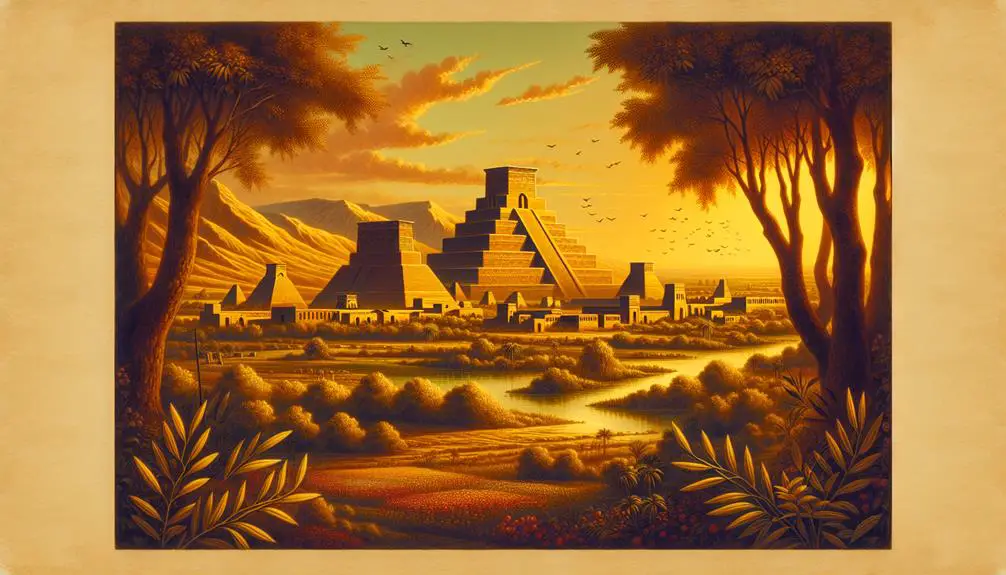
Iraq in the Bible
Just as the Tigris and Euphrates rivers weave through the heart of modern Iraq, so too do biblical narratives meander through its ancient landscapes.
You'll find that the cradle of civilization holds more than just historical treasures; it's a pivotal backdrop to tales as old as time itself—from the idyllic Garden of Eden to the towering ambition of Babel.
As you explore the connections between Iraq and the Bible, you'll uncover stories of prophets, kings, and divinely inspired revelations. But don't stop there; consider how these ancient texts echo in the land's rich, yet complex tapestry today.
Key Takeaways
- Modern-day Iraq's geography and history align with biblical narratives like the Garden of Eden.
- The Tower of Babel story reflects ancient Mesopotamia's linguistic diversity and architectural ambition.
- Babylonian kings, such as Hammurabi and Nebuchadnezzar II, left legacies that mirror biblical accounts of wisdom and grandeur.
- Prophetic messages and events in cities like Nineveh and Ur highlight Iraq's pivotal role in biblical history and prophecy.
The Garden of Eden Unveiled

Many scholars believe that the Garden of Eden, a symbol of paradise in biblical lore, was located in what's now modern-day Iraq. This perspective isn't just a fleeting thought; it's deeply rooted in the analysis of Mesopotamian mythology and the region's ancient ecological paradigms. You see, the narratives of Eden share striking similarities with Mesopotamian myths, which also speak of a primordial paradise, suggesting a cultural and geographical linkage.
Diving deeper, the ecological paradigms of ancient Mesopotamia provide a compelling backdrop to the Eden narrative. The region, known for its fertile lands between the Tigris and Euphrates rivers, mirrors the biblical description of Eden being nourished by four rivers. This isn't a coincidence. It reflects a shared understanding of an ideal environment, where life could flourish abundantly.
Understanding this connection requires you to look beyond the religious texts and into the environmental and mythological context of the ancient Near East. The parallels between the biblical Garden of Eden and Mesopotamian lore highlight how ancient societies used mythology to interpret and codify their observations of the natural world. This insight opens up a fascinating vista into how early civilizations understood their environment and its significance in their cosmological view.
The Tower of Babel Legacy
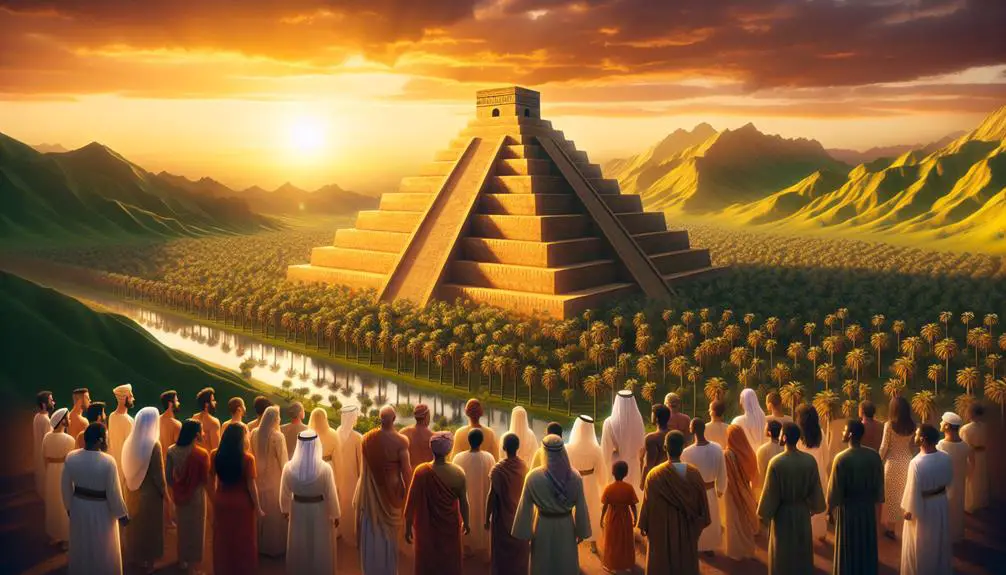
The Tower of Babel story, deeply embedded in biblical history, symbolizes humanity's unified ambition and its subsequent division through language barriers, reshaping our understanding of ancient social dynamics. This narrative isn't just a tale of hubris or divine intervention; it's a profound commentary on the origins of linguistic diversity and the challenges it presents to human cooperation and understanding.
You've likely marveled at the world's rich tapestry of languages, each one a universe of unique expressions, thoughts, and cultures. The Tower of Babel story provides an ancient backdrop to this diversity, suggesting that what divides us also enriches our collective human experience.
Moreover, the tale underscores the role of architectural innovation in humanity's quest to achieve greatness. The ambition to build a tower reaching the heavens reflects a universal drive to overcome our earthly bounds and leave a lasting legacy. This aspiration towards architectural marvels didn't end with Babel; it's a thread that connects ancient societies with today's skyline-defining feats.
In analyzing the Tower of Babel's legacy, you're delving into the foundational aspects of human civilization: the power of language to both unite and divide, and the relentless pursuit of architectural innovation that defines our history and shapes our future.
The Mighty Kings of Babylon
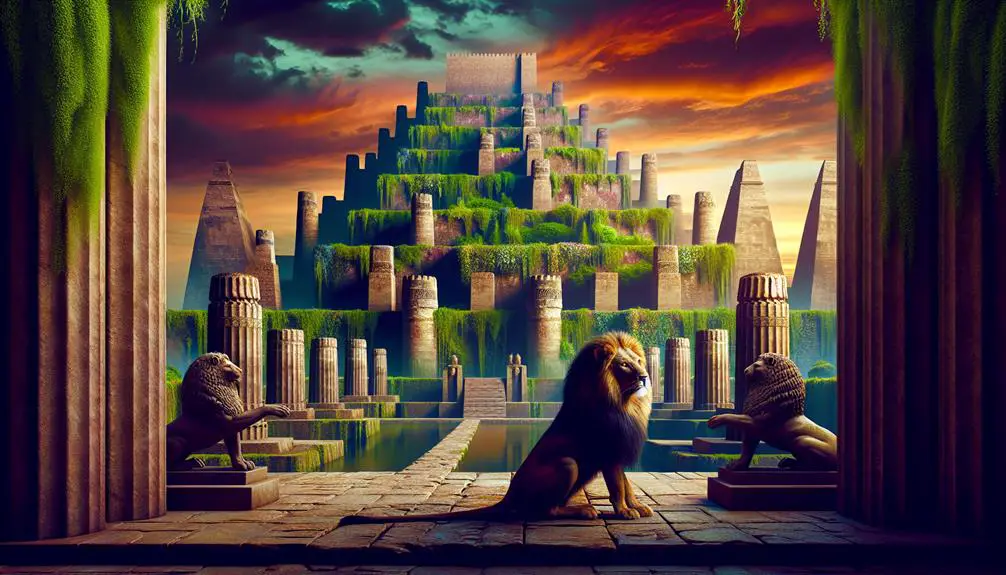
Throughout history, Babylon's kings have often been heralded for their unparalleled contributions to civilization, culture, and architecture. You'll find that during Nebuchadnezzar's reign, the empire reached its zenith, not just in territorial expansion but also in the flourishing of arts, science, and monumental architecture like the Hanging Gardens, one of the Seven Wonders of the Ancient World. However, Nebuchadnezzar was just one of the notable rulers.
The legacy of Babylonian kings can be broken down into several significant contributions:
- Hammurabi's Code: Perhaps the most famous of these contributions, Hammurabi's code was one of the earliest and most comprehensive written legal systems, influencing legal thought for centuries.
- Architectural Marvels: Under Nebuchadnezzar II, Babylon saw the construction of the Ishtar Gate and the famed Hanging Gardens, showcasing the empire's architectural innovation and aesthetic sensibility.
- Astronomical Advances: Babylonian kings supported advancements in astronomy, which were critical for the agricultural calendar and religious rituals.
- Cultural Flourishing: The patronage of arts and literature under these rulers helped preserve and enhance Mesopotamian culture and language.
Analyzing these kings' reigns shows not only their impact on their contemporaries but also their lasting legacy on the world stage.
Prophets and Revelations in Nineveh
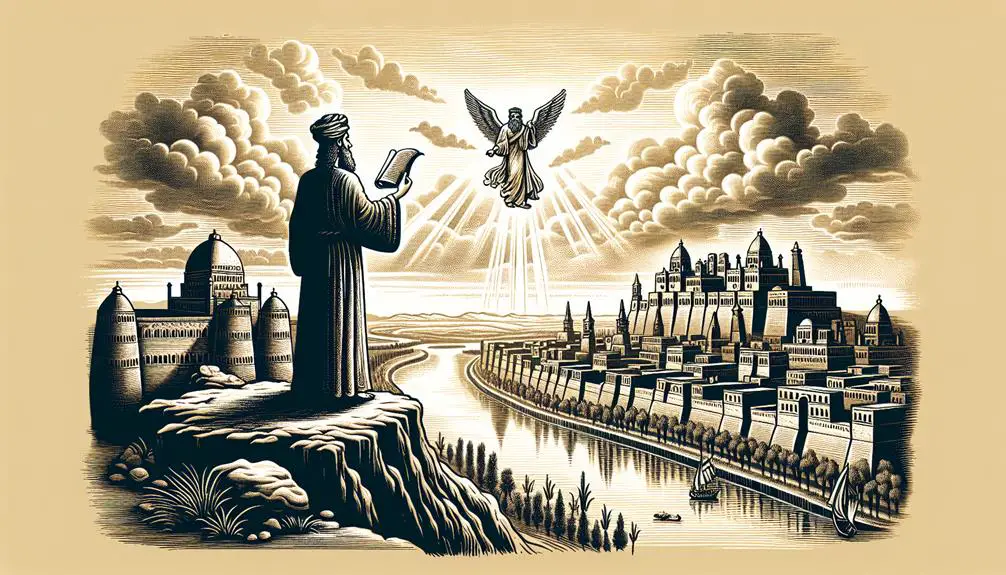
ARTICLE TITLE: Iraq in the Bible
PREVIOUS SUBTOPIC: 'The Mighty Kings of Babylon'
CURRENT SUBTOPIC: 'Prophets and Revelations in Nineveh'
Shifting focus from the grandeur of Babylon's rulers to the ancient city of Nineveh, we encounter a different type of leadership: prophets who brought divine revelations to its people. Unlike Babylon's monarchs, Nineveh's story intertwines with Jonah's mission, a narrative deeply etched in the annals of biblical history. This mission wasn't merely about prophetic declaration but was profoundly tied to Assyrian repentance, showcasing a pivotal moment where divine mercy met human contrition.
Prophet |
Mission |
Outcome |
|---|---|---|
Jonah |
To warn Nineveh of impending divine wrath unless they repent. |
Led to Assyrian repentance, averting the city's destruction. |
Nahum |
Predicted Nineveh's downfall. |
Focused on divine justice, contrasting Jonah's message of mercy. |
Zephaniah |
Foretold judgments against Judah and its neighbors, including Nineveh. |
Reinforced the theme of divine retribution and mercy. |
This table reveals the complexity of divine messages delivered to Nineveh. Each prophet, with his unique mission, contributed to a narrative arc that spanned from merciful reprieve to eventual judgment, reflecting the multifaceted nature of divine interaction with humanity.
Ur of the Chaldees: Abraham's Homeland
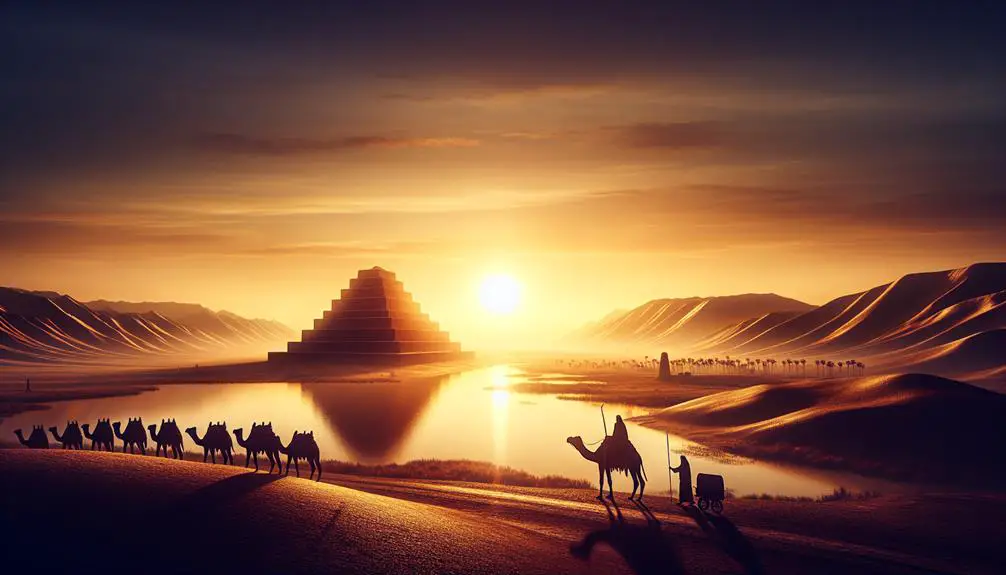
Delving into the origins of biblical patriarchs, you'll find Abraham's homeland, Ur of the Chaldees, as a focal point for understanding early monotheistic shifts. The site's archaeological evidence and cultural significance offer profound insights into the life and times of Abraham, a figure pivotal to Judaism, Christianity, and Islam.
Here are four key aspects to consider:
- Archaeological Discoveries: Excavations at Ur have unearthed a sophisticated urban center with remarkable structures, including the famous ziggurat. These findings corroborate the city's prominence during Abraham's era, providing tangible links to the biblical narrative.
- Cultural Significance: Ur wasn't just an influential economic hub but also a spiritual and cultural beacon. Its societal values and religious practices offer a backdrop to Abraham's revolutionary monotheistic beliefs, highlighting the stark contrasts and the potential influences on his spiritual journey.
- Historical Context: Understanding the historical dynamics of Ur during Abraham's time helps contextualize his departure and subsequent journey. The city's wealth, political structures, and religious institutions underscore the significance of his call to monotheism.
- Biblical Correlation: The textual references to Ur in the Bible, supported by archaeological evidence, reinforce its importance in Abraham's story, bridging faith and historical inquiry.
This exploration into Ur's archaeological evidence and cultural significance enriches our understanding of Abraham's homeland, offering a nuanced perspective on its role in the genesis of monotheistic traditions.
Frequently Asked Questions
How Does the Modern-Day Geography of Iraq Correlate With Biblical Locations Outside the Mentioned Article Sections?
You're looking at how Iraq's modern geography matches up with places from the Bible, focusing on ancient cities and biblical rivers. It's fascinating to see how these historical and spiritual landscapes intertwine.
Ancient cities like Babylon and Nineveh are nestled in today's Iraq, while the Tigris and Euphrates rivers, often mentioned in biblical texts, flow through its heart.
Analyzing these parallels offers a unique insight into the past, blending history with faith.
Are There Any Biblical Events Believed to Have Occurred in Iraq That Are Not Directly Linked to the Stories of the Garden of Eden, Tower of Babel, Babylon, Nineveh, or Ur?
You might be curious about other biblical events in the region of modern-day Iraq, beyond the well-known stories.
The city of Calneh and the plains of Shinar hold significance, often overlooked. While Calneh's exact role is debated, it's mentioned in Genesis as part of Nimrod's kingdom, suggesting its importance.
Similarly, the Shinar plains are historically rich, being the backdrop for several pivotal biblical narratives. These locations add depth to our understanding of biblical history.
How Have Archaeological Findings in Iraq Supported or Contradicted Biblical Narratives Not Covered in the Sections Mentioned?
You'll find that archaeological excavations in Iraq have stirred up some controversies, especially when it comes to aligning findings with biblical narratives outside the well-known stories.
These digs often reveal artifacts and structures that both support and challenge scriptural parallels. For instance, discrepancies in timelines and the physical evidence of certain cities' existences can puzzle historians.
Yet, in some cases, these findings provide tangible connections to ancient texts, enriching our understanding of historical events.
What Role Does Iraq Play in the Biblical End Times Prophecies, Outside the Contexts of Babylon, Nineveh, and Ur?
You're exploring a realm where prophecy interpretation and eschatological symbolism intertwine, seeking insight outside the well-trodden paths of Babylon, Nineveh, and Ur.
In this journey, Iraq's role in biblical end times prophecies emerges through layers of historical and symbolic meanings, inviting you to analyze beyond the surface.
Your quest reveals that, detached from its ancient cities, Iraq's significance is nuanced, shaped by broader interpretations of prophecy rather than specific geographic markers.
How Did the Cultural and Religious Landscape of Ancient Iraq Influence the Development of Biblical Texts, Beyond the Settings of Eden, Babel, Babylon, Nineveh, and Ur?
You're looking at how ancient Iraq's cultural and religious aspects shaped biblical texts, beyond famous settings.
The Mesopotamian laws and religious practices deeply influenced these texts.
You'll find that these elements provided a rich backdrop, contributing to the development of laws, moral codes, and narratives within the Bible.
This connection highlights the intricate ways in which the surroundings and beliefs of a region can weave into and enrich spiritual and historical documents.
Conclusion
As you've journeyed through the sands of time, exploring Iraq's biblical tapestry, you've uncovered ancient whispers of paradise, towering ambitions, regal might, and divine warnings.
The Garden of Eden, Babel's lofty failure, Babylon's illustrious rulers, Nineveh's prophetic echoes, and Abraham's Ur have intertwined to sketch a vivid mosaic of faith, power, and revelation.
This cradle of civilization, bathed in the golden hues of history and spirituality, continues to enlighten and inspire, offering a timeless testament to humanity's enduring quest for meaning and connection.

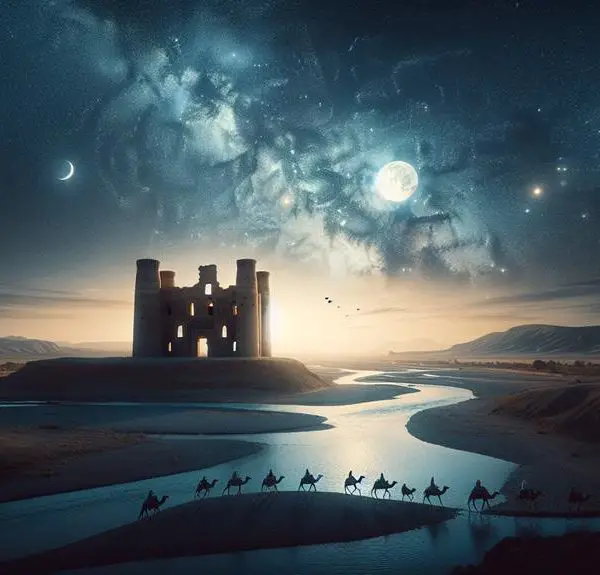
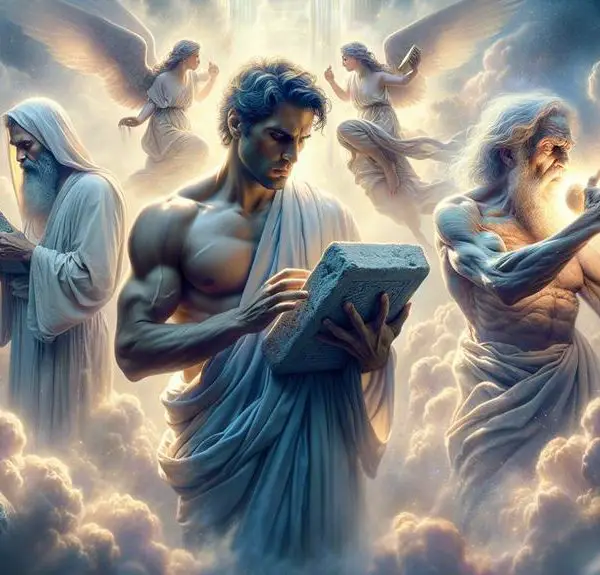
Sign up